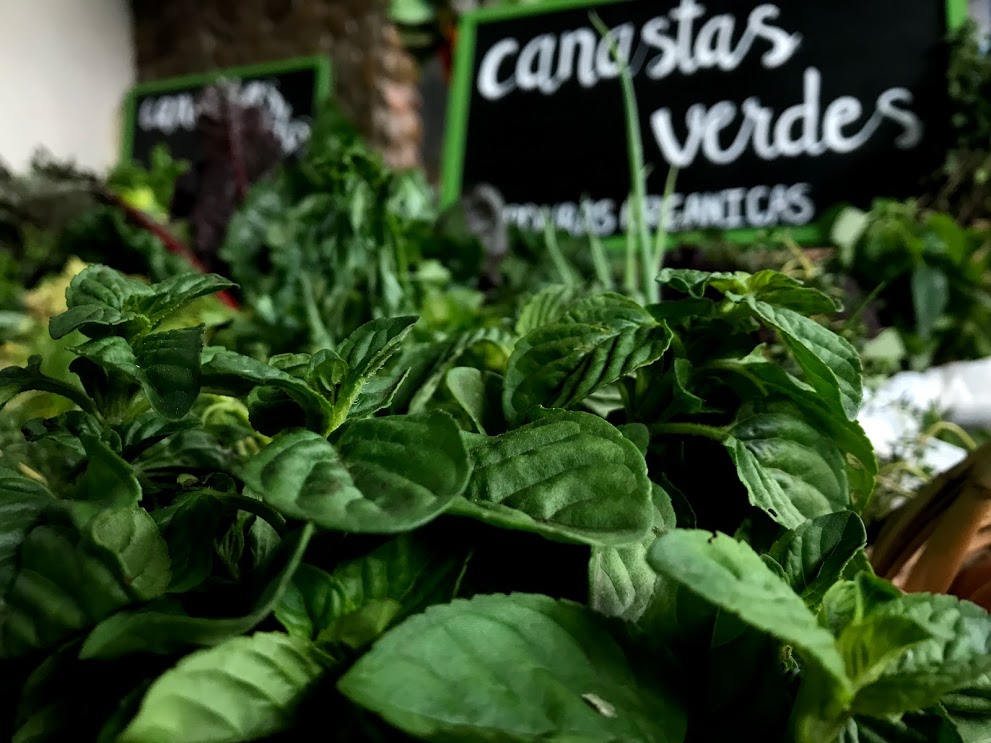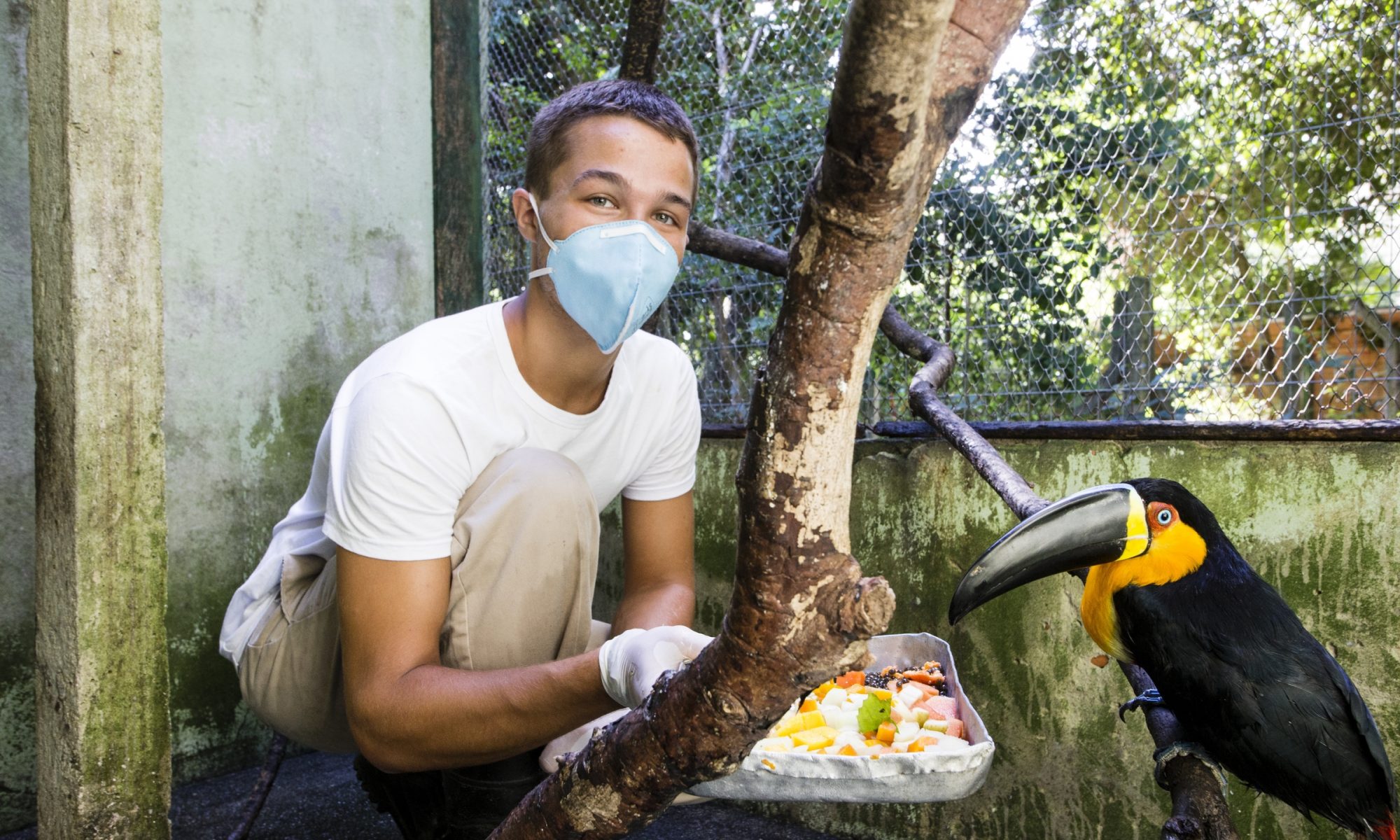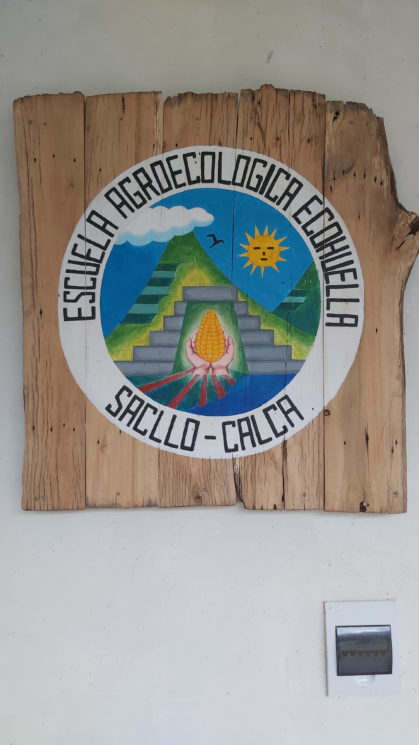
by Isabelle, Tufts Civic Semester Participant
The rain was falling hard outside in messy drops while Marilu took her cutting board off the shelf and a knife from the drawer, setting up onions to be chopped. While she laid out her materials, I did the same, but with a notebook and an audio recorder on my phone instead of vegetables, both of us ready in our own ways to have a chat. After a morning spent weeding in the chakra and discussing potential rain-capture irrigation solutions with an American specialist, Marilu and I had been driven inside by the rain, and it seemed like a perfect time to learn her story, in a more holistic and inclusive manner than our snippets of conversation in the previous weeks. When I asked if she could tell me some stories about Canastas Verdes and her own life, Marilu was excited to share, and, as the incredibly strong and busy woman that I know, she had a lot to say.
Marilu began her story with the birth of organic farming as she knows it in her own life, where years ago, it all started with a sweet potato on the back patio. Since her childhood, Marilu and her family had cultivated vegetables and herbs on a small scale, and as organically as possible but not with those methods as their focus. After she had grown into adulthood and began caring for her own family, and her aging father in return, Marilu began to experiment with different methods of gardening, adding new plants and researching the importance of organic produce, but only to consume in the house. At the time she was a teacher, and as the chakra grew, she began to look for a way to sell the produce. At this time, more than eight years ago, there was no market in Urubamba for organic vegetables, as most everyone was comfortable with the status quo—produce maintained through the use of pesticides and new-wave farming practices that began in the sixties. Marilu, on the other hand, was looking to return to the farming practices of her ancestors with respect to the apus to whom she speaks in Quechua, her family’s native tongue. Organic farming, for her originally, was a way to carry on the now-lost tradition of respect for la tierra and for one’s own body, a departure from the chemical-driven world. With this in mind, she set out with an iron will to bring organic produce back to Urubamba and to the Sacred Valley, but she knew she couldn’t do it alone. The municipality, and frankly the city, was not open to the changes that she wanted to see, so Marilu began to speak with other women who were farming organically and who wanted to sell their produce, or at least who wanted to try.
In the beginning, this new association was made up of eight women, all with their own chakras who were learning and growing together with their organic produce. But, as Marilu says ardently, organic farming is hard work—you get your nails dirty and you hardly ever sleep. For many of the women in this new group, though they were stronger together, this was too much, and little by little they began to return to the popular methods, or at least to working solo. Marilu, and the five women who make up the association now, pushed on, and once their group was solidified, they began to develop into what they are today—Canastas Verdes. Throughout this story of growth, Marilu maintained her pride in the fact that Canastas Verdes was her creation, her baby, so-to-speak, all the way from the first organic produce to the name and to her title as President now. Although the work of the association is incredible—highly involved in the community and done with very little internal or external support—Marilu’s pride comes from her own struggles and how she overcomes them, and, in fact, the ways in which organic vegetables have helped her to do so.
Although I have known her for over two months now, Marilu had never told me all that she was up against while building a program of community health and involvement. That’s just how strong she is. But she’s a single mother to a son with autism, who also cares for her ninety-three-year-old father. She can’t afford a home of her own, and often the cost of caring for her family and running Canastas Verdes is too much, but after years of perseverance, she’s making it all work. In fact, her son, who is now a young adult, has been her inspiration for continuing with organic produce, because his health has benefitted from the removal of pesticides in his system. In his younger years, when she couldn’t produce enough for complete meals, her son struggled both neurologically and physically, but since she was able to make an organic diet possible, he has been able to function at a higher level and have fewer complications. What’s more, Marilu says she has learned patience and compassion through raising her son—as most mothers do, but with greater intensity—and she asserts that he has been her greatest teacher, and these lessons of humanity are ones that she takes directly into her work. The produce that she grows comes from a love of the earth, of the Pachamama, and a love of family, both for her own and that of Urubamba.
Tears are beginning to stream down Marilu’s cheeks as she discusses all this with me, and they begin to flow harder as she details the lack of action in the world, the ways in which most people sit by and watch it all being destroyed. Here in the Sacred Valley, fed by glaciers and maintained by very specific climates, Marilu and the people of Urubamba are at great risk as the environment changes rapidly, and she knows this. The water, the land—everything is being polluted and mistreated, she says. No one wants to change their ways because they think it’s too hard, but this will take a toll on their lives. Marilu sees the pollution of her ancestral land, the planet, and of the bodies of her neighbors, consuming pesticides and processed food, diets that can cause cancers, Parkinson’s disease, and many other detriments to health. She sees that soon there will not be enough water, and therefore not enough food. She says of the people in poorer countries and regions: “We’re like rats in a lab and we will be the first ones to die,” her eyes read with sadness and anger. This is the reality that she’s actively working against, but she knows it’s not enough and that Canastas Verdes is running out of time.
We’ve been talking for over a half-hour at this point, and Marilu points out that she should probably start making lunch. The onion she’d prepared to cut will chatting sits untouched on the cutting board in front of her—forgotten as she answered my questions, delivered with passion and force like the most moving of speeches. But before I go, she thanks me for taking the time to talk to her, and reiterates all that she struggles against and the hope that she has despite it all. By the end, we’re both crying and embracing, because the planet is dying and we’re forced to watch it happen. Marilu is doing all that she can, and I tell her I wish I could do more, both for Canastas Verdes and for the Earth, but she just shakes her head and gives me another hug. “I really should make lunch,” she says as she wipes tears from her eyes, and I thank her for her time and say nos vemos—see you later—as she finally begins to cut the onion.
After leaving Marilu to cut onions in the kitchen, I walked slowly home in a bit of a stupor. The rain that had been falling in a torrent just minutes before but the sky was now open and bright. My feet moved slowly and my mind felt heavy as I wiped tears out of my eyes, trying to hold back the ones threatening to spring forth with each though of Marilu’s words. In particular “somos como ratas en un laboratorio” stuck out in my mind and the pain that she expressed while saying them. As I walked along the river that rushes passed the cemetery, such a sentiment felt that much stronger—the power and life of the Earth running parallel with death, a concept that will become much more prevalent if we don’t care for the planet. When I got home to and empty house, I sat down and tried to process the conversation I’d just had, but I couldn’t do it in my head, so I called my dad and told him all about it. Thankfully, he let me interrupt his day to recount Marilu’s story because I really had to say it out loud to become more grounded. Regardless, I was still overcome with a feeling of helplessness—what had I really done to help her and all of Canastas Verdes? What could I even do in the next few weeks that could be meaningful? In fact, I felt quite guilty, because I had never spoken to someone in such depth, in this place, about the direct impact on their lives and that of their community from climate change and loss of resources, and I felt like I was leaving too soon. If I stayed on with Canastas Verdes for a year, could I make more of a difference? Up until this conversation, I didn’t know the depth of the personal stories behind this project, or the needs of Marilu and all the women, because they hadn’t told me, and what’s worse, I hadn’t really asked. All of this swirled around in my head even hours and days later, that is until I was able to speak with Marilu again.
Exactly one week later, we got that next chat. In the time between, I had been fully immersed in nature in the Amazon with my mindset heavily influenced by Marilu’s words. I spent my time there walking through the jungle with the group and our guide, Robin, taking it all in with heightened appreciation. Although I have always had a deep love of nature and a passion for its protection, there was just something so powerful about her story, and then Robin’s stories, that validated what I’d always felt and challenged me to think further on my own impact and ideas. So after all this, I got to go back and hear Marilu’s story again, this time as she told it to Raquel and Mindy, leaving some details out but with all her important points. It was a great experience for me to be able to experience her telling of her life once more, because it gave me more clarity and a deeper sense of knowing her. Within this same time, I was also privy to Marilu’s answers to questions relating to how helpful I’d actually been in my role as an intern/volunteer. After coming away feeling so guilty and useless, though inspired, from our last talk, it was affirming and hope-building to have Marilu say directly that I had done some good, both for her and Canastas Verdes. Although this need to be validated is somewhat egocentric, this second conversation gave me a push forward, because in the time in between I had felt somewhat lost. What’s more, I was able to talk to Marilu in-depth for a third time, in the same week, while we answered the questions together for the Dragons’ Community Grant Fund, something I am applying to for Canastas Verdes. And yet again, Marilu’s eyes lit up with passion, and then watered with tears, while we talked about her work and her struggles, and I was left in awe for a third time in that week over how strong she is and all that she has accomplished.
Looking back on Marilu’s story and message, I realized that there is a lot that I need to change in my own lifestyle, and even more in the lifestyles of my two family’s (here in Peru and back in Maine). Actually, there needs to be a drastic societal shift, but I think while working towards that, I can also work small, by changing my own ways and looking to educate those around me. Eating organic, eating healthy, recycling, not wasting—because as Marilu says “La basura no es la basura, la persona con basura es la basura”. Change must happen, and fast because if not, we’ll have nothing left. La Amazonia, the glaciers that stand tall over the Sacred Valley, watering the people beneath and feeding into the global rainforest, and all the other life-sustaining and beautiful resources, will be gone sooner than we know. Here in Peru, the country is slated to be the third most impacted by climate change in the coming years, bringing home Marilu’s fears that much more. Living in this amazing place, making it my second home, I fear with her, and I can only hope that people begin to wake up, both here and all over the world, because the Earth is dying, crumbling right between our capable yet inactive human hands.
Originally posted here





